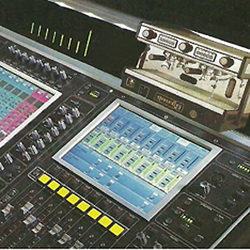
CRITICAL LISTENING
First of all, I always recommend that engineers spend time listening to acoustic music, in whatever form it takes. Go to jazz clubs where you can sit near a trio. Go to a symphony concert. Go see an opera. Go hear some chamber music. Check out some bluegrass.
Despite all the amazing technical advancements we’ve seen over the years, there is still a huge disparity between what instruments and voices sound like acoustically, and what they sound like when pumped through a sound system.
It comes down to the fact that microphones don’t “hear” things the way our ears do, loudspeakers don’t produce sound the way instruments do, and no electronic systems blend signals the way an acoustic space blends the collective sounds of real sources. There is only so much we can do about these things, but we must strive to do what we can.
Start with careful mic choices, and perhaps more importantly, careful mic placement. We also need to well understand how sound comes out of various instruments (Clue: most of the sound of a saxophone, for instance, does NOT come out of the bell.)
Paying attention to gain structure (a.k.a., the official broken record subject of pro audio) is vital. We can keep noise and distortion to a minimum and dynamic range and headroom maximized throughout the signal chain. And of course we must understand loudspeaker placement and coverage beyond “line arrays are cool.”
Another thing to remember is that fewer mics equal fewer phase problems. Too many mics all over the stage, each picking up multiple version of the same source (say, drums), can produce comb filtering problems—“hollow” and/or “phasey” sounds that are a dead giveaway that you’re using a sound reinforcement system.
THEN THERE’S THE REALLY TRICKY STUFF
But beyond the general technical approach of simply doing things right in the first place, there are a number of techniques available to further the cause of making the PA disappear. The first has to do with the way different frequencies propagate and are absorbed.
Generally, high frequencies are more readily absorbed than mids or lows. At the same time, it is more difficult to produce low frequencies acoustically, and to manage them between the PA and the performance space.
